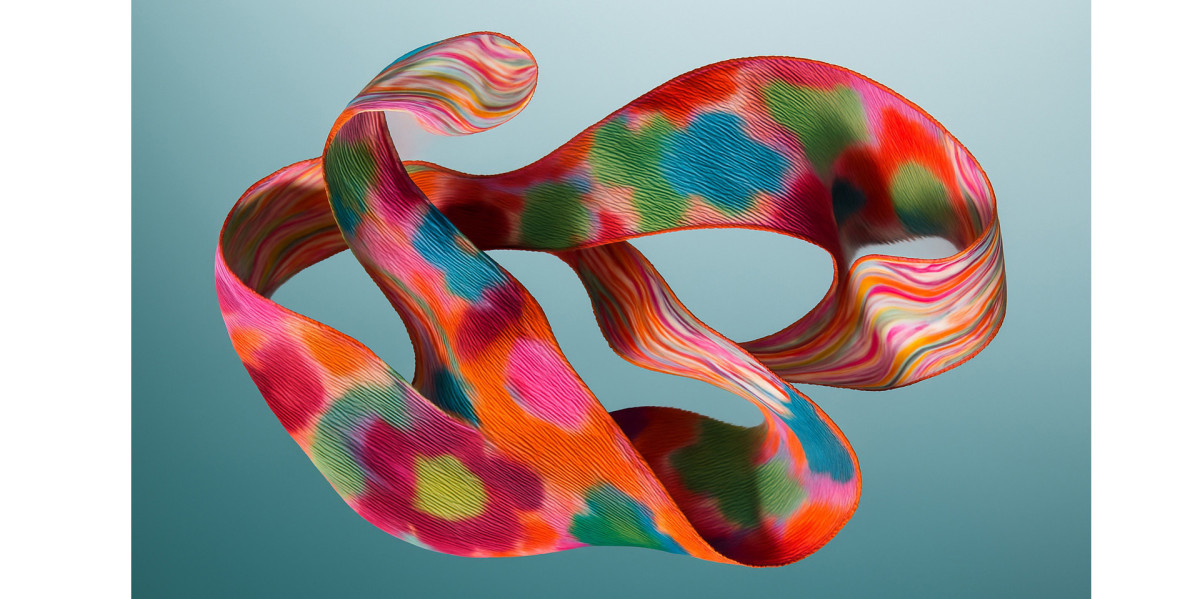Milan-based design platform Alcova has given its Heimtextil Trends 2026 a provocative title: Craft is a verb. This headline is particularly provocative as this season was about thinking about artificial intelligence – a technology not immediately associated with craftsmanship. It is precisely this bridge that the design experts want to build with their trend outlook.
While new technologies are increasingly shaping how we live together, our everyday lives and our work – including that of designers – the fear of this change is also growing. Therefore, handmade items are now more valuable than ever. This is not a new phenomenon, reported Joseph Grima from Alcova. Fears such as job losses were also omnipresent during the Industrial Revolution, which fundamentally changed the way we produce goods. In response to faster industrialization, the value of classical crafts was rediscovered, for example in the Bauhaus style and the Viennese movement.
“There will be displacement,” admits Grima, “but at the same time these developments also offer an opportunity for empowerment.” Many innovations that people benefit from today were only made possible by new technologies. The design platform does not see the advantages of artificial intelligence as a paradox, but as an extension of human work, for example in the form of the techno-craftsman, who is at the center of one of the six trend directions that researchers have identified for the next issue of Heimtextil. “Visible Co-Work” is the name of the approach in which people and AI work hand in hand on a project. This can be used, for example, to create digitally embroidered linen or 3D knitted patchwork work.
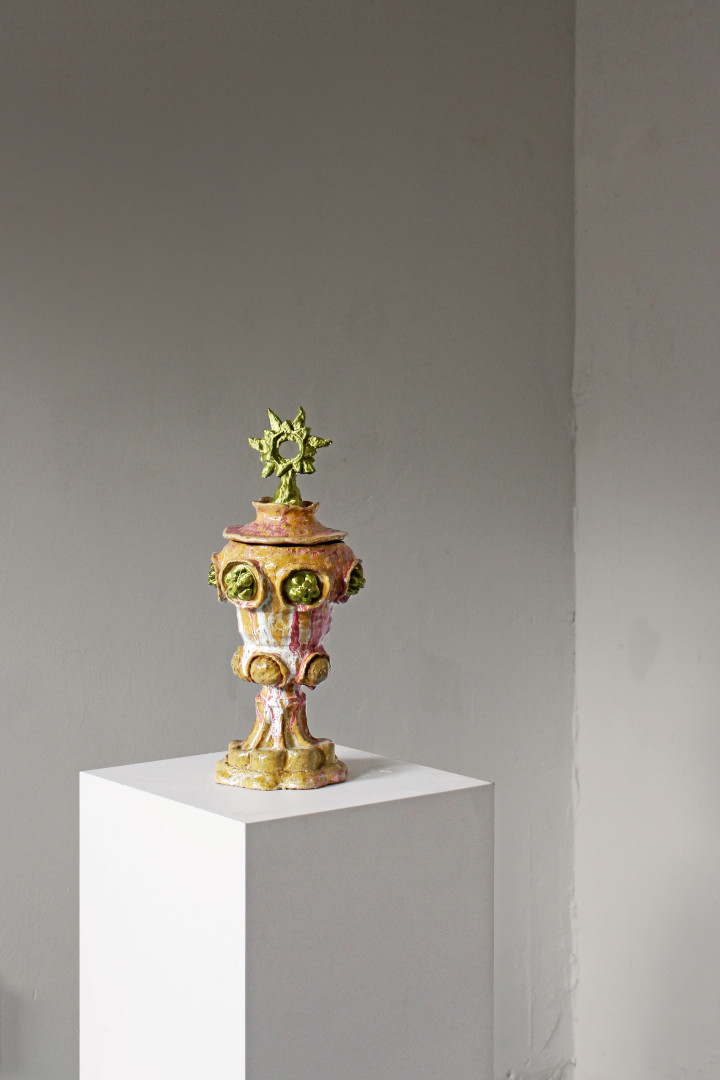
When artificial intelligence and craftsmanship meet on equal terms, hybrid works are created that combine codes and tradition, like in this piece. (Source: Messe Frankfurt)
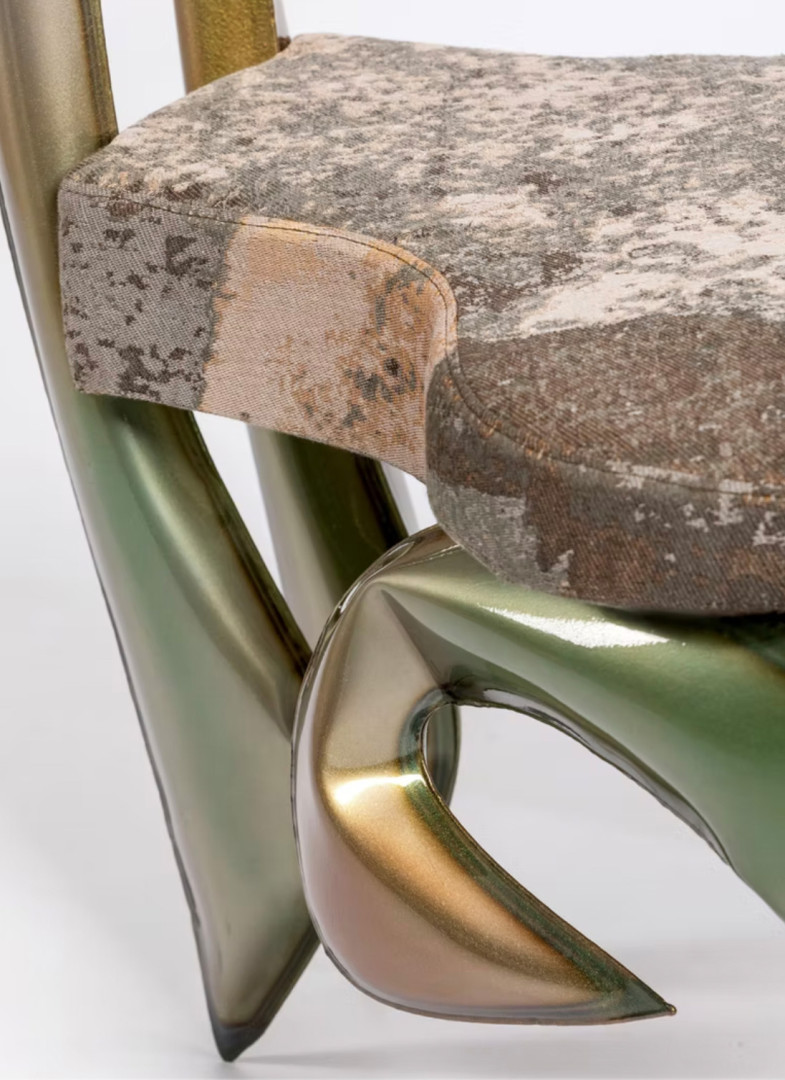
Some designs seem like they come from another world. (Source: Messe Frankfurt)
The first trend, “Re:Media,” deals with the back and forth between different types of media. Drawings are first converted into digital renderings and then converted back into jacquards or hand-embroidered patterns. This creates motifs that are based on so-called glitches – broken aesthetics, pixelated color mixtures and digitally reworked hand drawings.
In “Sensing Nature,” however, nature is the generator of shapes, colors, sounds and structures. Artificial intelligence records them and creates patterns from them. In one example, the movement of the sea was recorded and transferred to textiles; other artists translated rural sounds into designs; and in another fabric, images of tree bark were used as templates.
“A Playful Touch” is intended to be a counterpoint to times characterized by utility and efficiency. Small decorative details adorn the objects and serve a single purpose: to be beautiful. A ruffle on an otherwise minimalist curtain, a neon element on a natural-colored linen blanket, or an unexpectedly placed tassel serve as deliberate interruptions.
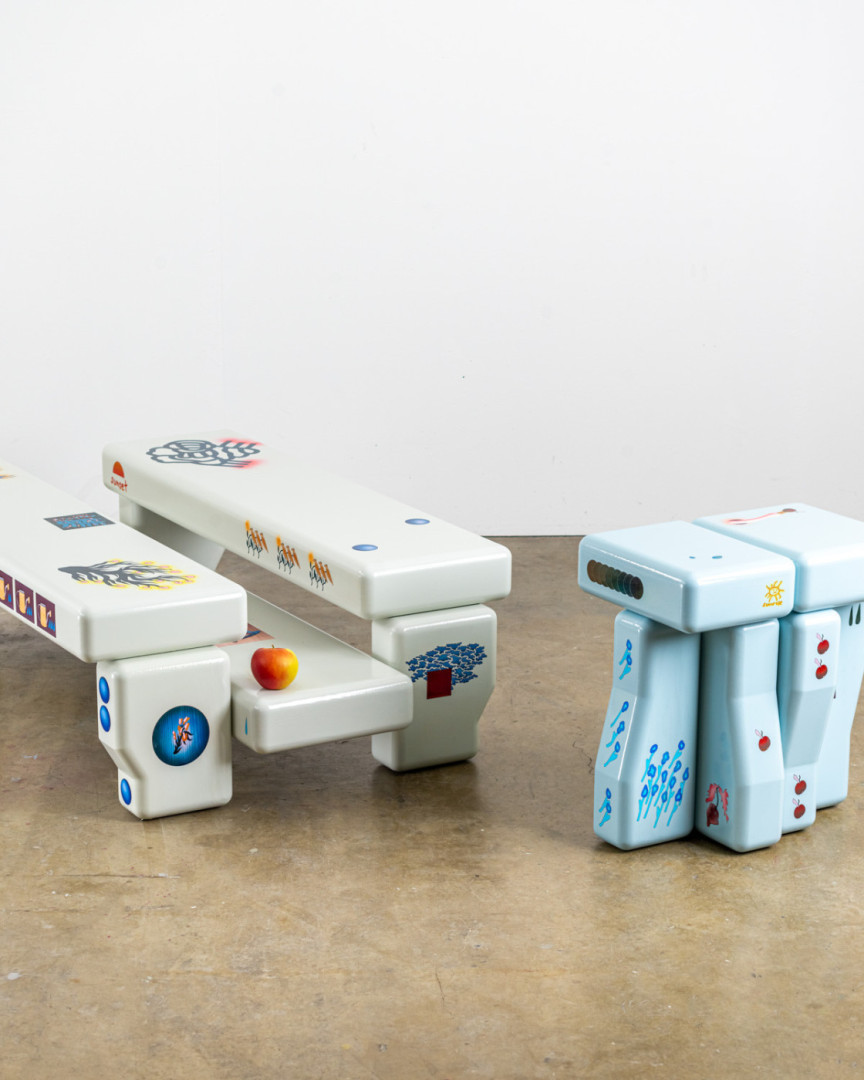
Small, playful details characterize the design of “A Playful Touch”. (Source: Messe Frankfurt)
“Crafted Irregularity” celebrates what the name suggests: fabrics with knots, irregular colors, visible seams and asymmetrical processing take center stage. “We want to counteract smooth, perfect surfaces,” emphasizes Valentina Ciuffi from Alcova.
The latest trend is a bit scary and interesting at the same time. Distorted, unfamiliar symbols meet designs that place technology in a human context. Some objects look as if the inner workings of a machine have been turned inside out.
The tension between new technologies and craftsmanship is also reflected in the color palette that Alcova has put together for the upcoming Heimtextil trade fair. It is characterized by earthy tones and artificial-looking colors. The color palette is visually polarizing, notes Alice Moretto from the Milan design team. Nevertheless, the trend experts see the colors in combination: the unexpected pairing is said to have a disruptive effect on the homogeneous result. At the same time, the mixture enhances the other palette, says Ciuffi.
Unexpected was also the key word when the trend research team discussed whether and in which business area artificial intelligence could replace humans. Joseph Grima is convinced that designers don't have to worry about this. “Design should be original and surprising; it should create meaning.” This is something that AI cannot do and cannot act intuitively. This in turn is an aspect that plays a major role for the Alcova team. Experiences and feelings are just as important as touching the textiles. “Ultimately, physical space is crucial for networking with new trends,” Ciuffi is convinced.
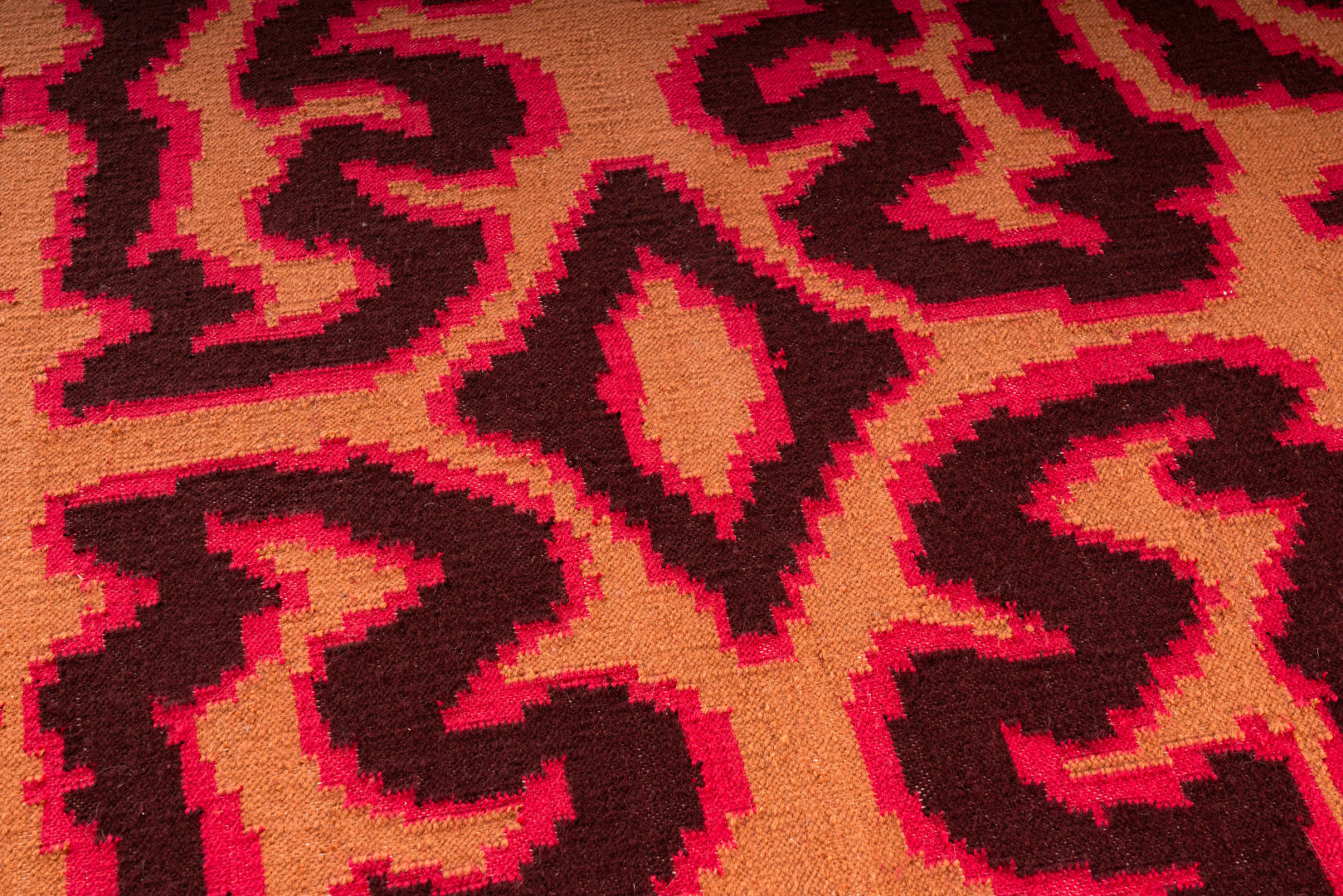
The “Re:Media” trend is characterized by glitch-like motifs, pixelated color gradients and digitally altered hand drawings. (Source: Messe Frankfurt)
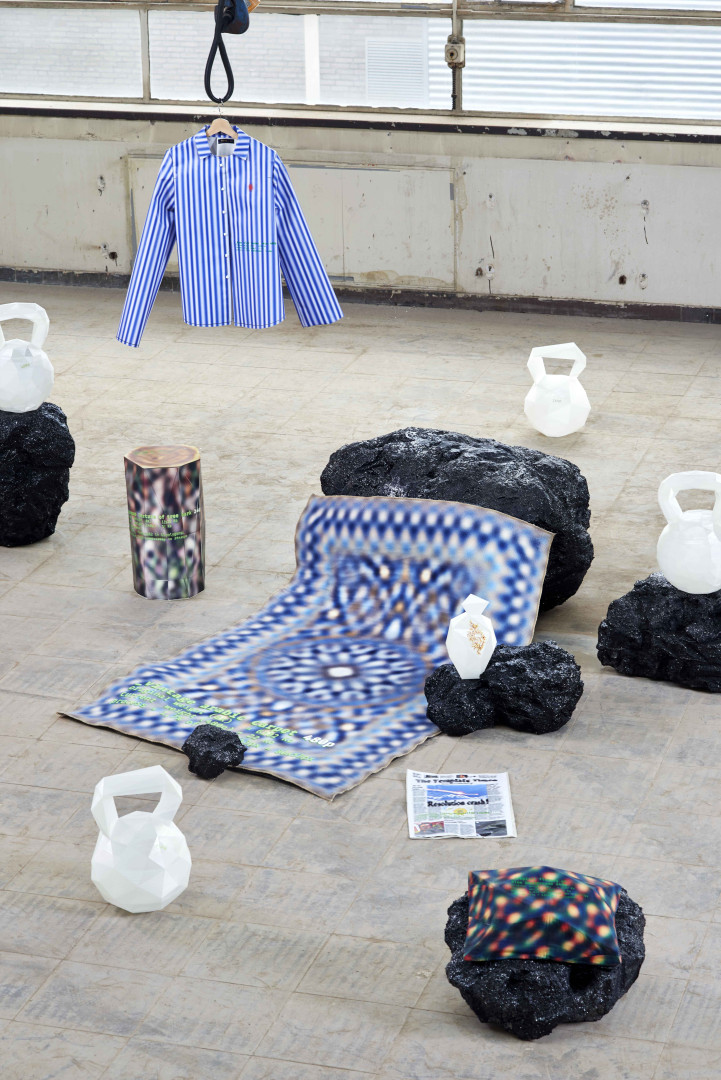
Jonas Hejduk's work presents a fictional scenario in which a meteorite has hit the earth, causing an object to change and disintegrate. (Source: Messe Frankfurt)
The curators want to create this space with the Trend Area, which will be on display at Heimtextil from January 13th to 16th, 2026 in Hall 6.1 at Messe Frankfurt. “We want to show,” says Grima, “creating something that can be experienced intuitively, without panels covered in text.” Perceptible textures meet generative patterns, natural structures meet algorithmic precision. With “Craft is a verb,” the curators illustrate the designs that emerge from the fusion of craftsmanship and digital design methods.
“Heimtextil Trends 26/27 illustrate how artificial intelligence will change the textile industry and, in combination with craftsmanship, open up new perspectives. They give the industry impulses for sustainable production methods, innovative cooperation models and the development of sustainable business strategies,” adds Olaf Schmidt, Vice President Textiles & Textile Technologies Frankfurt Trade Fair.
